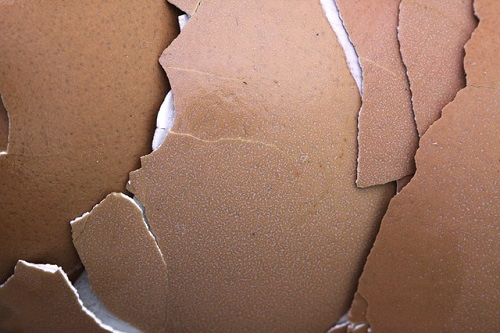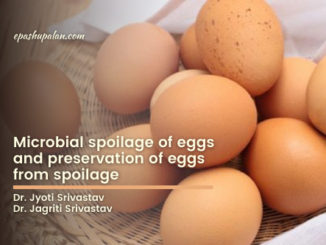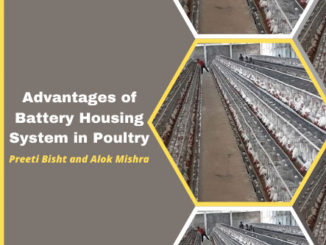The egg is widely used in the food manufacturing and food processing industries. Eggs are used in large quantities in products such as cakes, salads, food decorations, and fast food, wasting many tons of eggs every day, as well as leaving behind organic waste and incurring high costs for disposal. About two and a half thousand tons of eggshell waste is generated worldwide every year. Most of the eggs are thrown away without any pre-treatment. Waste management is not a pleasurable task for many people and the odor created by egg biodegradation also causes air pollution. The Environmental Protection Agency has declared eggshell waste as the 15th largest food industry-produced pollutant. If this waste is not disposed of properly in a specific place, it becomes a major source of environmental pollution, thus the growth of the fungus on the eggshell later poses a health risk. In recent years, great efforts have been made to convert egg waste into a valuable product.

These major applications include the option for grafts used in bones as well as the initial material hydroxyapatite for the preparation of Calcium phosphate bioceramics (and bone mineralization and growth), as a catalyst for the removal of ionic pollutants from low-cost aqueous solutions or for biodiesel. Chicken eggshell is one of the agricultural wastes that has attracted the attention of many innovators and it is likely to be recycled and used in medical and dental treatment in the future. An important ingredient in eggshells is pure Calcium carbonate. Its chemical composition (by weight) is reported as; Calcium carbonate (94%), Magnesium carbonate (1%), Calcium phosphate (1%), and Organic matter (4%), Despite its beneficial properties, little attention has been paid to the conversion of Eggshell waste into useful products. In this regard, information on the technical feasibility of the properties of various useful substances produced from eggshells is reviewed and shared with any interested egg processing entrepreneur, new entrepreneur, and consumer. In this regard, there are dual benefits in helping to solve environmental problems, including the problem of unemployment. Eggshell waste and its utilization by different methods make the process more efficient and environmentally friendly and provides a new space for solid waste management.
The Composition of the eggshell. (Ray et al 2017)
| Components | Concentration (%) |
| Moisture | 0.46 |
| Protein | 3.92 |
| Ash | 94.61 |
| Fat | 0.35 |
| Calcium | 34.12 |
| Magnesium | 0.29 |
| Phosphorus | 0.04 |
| Potassium | 0.03 |
| Sodium | 0.05 |
| Copper | <1 ppm |
| Iron | 22 ppm |
Medical use of eggshells
Egg waste contains active compounds that are valuable in medical applications. In terms of this feature, the production of biocompatible materials or organic matter from them has added a different dimension to the use of Egg Shell agricultural waste. The eggshell is used to make (HAp). Calcium phosphate ceramic content was found to be important as a biomaterial due to its oleophilic nature and its inclusion in bone tissues. Used eggshells remain useless and un-converted. Calcium carbonate is used as a substance to make (HAp) which is present in the eggshell as much as 94%, it is an important part of bones and bone used in dentistry. In addition, the use of eggshells to make (HAp) reduces waste pollution and helps keep the environment clean, and then transforms that waste into a highly valuable product that reduces the chances of bone repair or treatment change. Processing of Eggshell waste into (HAp) and (Nano -HAp) is an environmentally friendly process.
For Biodiesel production
Calcium oxide (CAO) is one of the most basic oxides, useful for biodiesel production. Eggshells and mussel shells can be used as sources of calcium oxide used as heterogeneous catalysts in biodiesel products. The chemical composition of the eggshell is mainly composed of Calcium carbonate. Due to the numerous internal pores on the eggshell surface and its immense availability, the eggshell is a good raw material for making thin powders, paving the way for its use as a porous solid catalyst. In fact, solid bases extracted from eggs are created by the catalytic calculation process.
The concept of egg-shell recycling was implemented with the vision of recycling eggshell waste, reducing the number of contaminants, reducing the production cost of biodiesel, and making the process of biodiesel production completely environmentally friendly and a low-cost catalyst for biodiesel production. In 2013, scientists achieved 100% biodiesel production by using 4% weighted eggshell waste as a catalyst for the trans-esterification of cooking oils for 5 hours. In addition, this calcium oxide catalyst can be reused more than 8 times without reduction in its working capacity.
As adsorbant
Many researchers have attempted to evaluate the use of chicken eggshells as a natural and economical absorbent to remove hydrogen sulfide from wastewater. Which is harmful to aquatic life because it reduces the dissolved oxygen level in the water in their environment. The eggshell is at the forefront of absorbing hydrogen sulfide. For the purpose of using it as an absorbent, the physical and chemical properties of processed eggshells were examined and the potential utility of removing their heavy metals from artificial and real wastewater was studied. The natural egg-shell has been shown to be able to separate cadmium and chromium in large quantities and lead in whole from wastewater. An adsorbent solution made from eggshells has successfully separated silver metal from technical waste. The use of eggshell waste as an adsorbent to remove the solid color from an aqueous solution is a new concept that promotes the recycling of eggshells.
As Fertilizer
Every day a large number of eggshells are produced around the world as bio-waste. It can be used as a fertilizer for plants as it helps in preventing the disease called blossom-end rot (BER) of the plant and helps in reducing the cost of farming. Basically, the eggshell waste left after industrial processing is used in agriculture by crushing- grinding it in the form of fine powder to repair the soils having acidic pH. Its use as fertilizer increases the absorption of minerals and salts from the soil by plants. Also, the use of eggshells as an alternative source of (calcium carbonate) can reduce the impact on the natural reserves of limestone, as it is an unconventional natural source.
As a Supplement
The process of extracting calcium from oyster shells is not only tedious but also an expensive process because oyster shells are not readily available. Therefore, chicken eggshell appears to be a suitable alternative source of calcium supplement, as it is easier to assemble and easier to extract from the eggshell than calcium from oyster shells, and it is also highly soluble.
Eggshells are made almost entirely of calcium carbonate, which makes up your nails, teeth, and bones, as well as Proteins, Magnesium, Selenium, Strontium, and other compounds that keep bones and joints healthy. The nutrients found in the eggshell are easily digested and get absorbed in your body and the best part is that they are 100% free.
The processed eggshell can also be used as a Calcium supplement tablet for women as an alternative to (Cipcal-500). There are many calcium supplements made from eggshells available in the market and you can also make calcium supplements from eggshells at home after proper channel of processing. Poultry breeders can use eggshells exclusively as a source of Calcium in the diet of male chickens, as it has no detrimental effects on weight gain, semen quality, reproductive development, and calcium homeostasis.
Medicinal use of eggshell membrane
The Natural Egg Shell Membrane (NEM) is an innovative dietary supplement that contains naturally occurring glycosaminoglycan and proteins needed to maintain healthy joints and connective tissues. Research has been conducted on the use of natural eggshell membranes as a treatment for pain and elasticity associated with joint and connective tissue deformities. The discovery of the eggshell membrane as a natural source of collagen, glucosamine, chondroitin, and hyaluronic acid has led to convincing treatments for joint and connective tissue pain. Natural Egg Shell Membrane (NEM) is a new effective and safe therapeutic option for the treatment of pain and elasticity associated with joint and connective tissue disorders. This has led to the rejuvenation of medicines made using it for patients suffering from Arthritis or other joint pains.
Bulk or Bio-filler
Linear low-density polyethylene (LLDPE) is an important polymer product used to process useful products such as containers, sheets, table coverings, etc. It is used in various applications due to its chemical neutrality, toughness, anti-corrosion, and anti-cracking flexibility. Due to its excellent qualities, it is extremely desired but expensive. To solve this problem and improve its physical and chemical properties, cheap inorganic materials are used as fillers in low-density polyethylene. Calcium oxide and hydroxyapatite derived from eggshells have been found to be beneficial in improving its physical and chemical properties, as well as being widely beneficial as a bulk filler as it is inexpensive, lightweight, and little-weight bearing. Moreover; the adhesive properties in the eggshell are higher than in other components used as biofilters.
As coating pigment
Corrosion has been a problem for so long in carbon steel pipes (the most common and versatile engineering material used in pipes and ducts for water transportation) and coatings are applied to protect it from corrosion. Calcium carbonate obtained from the eggshell can be used as a coating pigment in Carbon steel to protect the pipes from rust. Also using the eggshell as a coating pigment for an inkjet printer provides another way of its reuse. Previously, synthetic pigments based on silicon oxide were considered suitable in inkjet printers but they had some advantages and disadvantages. The silicone used to have high image resolution, high color intensity, and fast-drying but it was not cheap and it was in high demand for construction. Therefore, eggshells proved to be an effective alternative to Silicon oxide as they are readily available and inexpensive.
The use of eggshells as a coating pigment for inkjet printers improved the optical density of dye-based inks and reduced the gloss density of black ink and paper. Therefore, eggshells can be an effective source for their use in inkjet printers with multi-color prints instead of simple black and white prints.
Use of eggshells for homemade experiments and handicrafts
There are many experiments using eggs or eggshells that are great learning experiences for kids at home. In this, the naked egg experiment is where you will completely dissolve the eggshell and then you can separate thin layers one by one of the eggs when you will finally see the egg yolk and white. Eggshells are the perfect material to make mosaic art because it breaks down into really interesting shapes. You can paint your shell with different colors and then it can be used for all kinds of crafts -for photo frames, pictures on paper, and much more. Creating Easter or Christmas decorations using eggshells is fun for kids or adults too. And it’s also pretty easy to make; you do not need to boil the eggs. You will only make two small holes in your egg – one at each end – and remove the egg yolk and white. Then you can decorate them with your fancy Easter theme, Christmas theme, or in fact anyway.
Conclusion
The egg industry has developed rapidly in the past decade due to the growing awareness for healthy and nutritious diets in people’s eating habits. People have now embraced the option of eggs as a good source of high-quality protein. But at the same time, the eggshell that causes environmental pollution is thrown out in the open. These eggshells are useful for making medicine, pharmaceuticals as well as numerous other products. Moreover, this raw material is easily available and at a low cost. Eggshells are considered to be the 15th major cause of pollution in the environment. For the sustainable development of our world, it is necessary to recycle these industrial eggshell wastes. While this may not have played a major role in eliminating pollution, at least it could be a step in the right direction as small drops can create powerful oceans! Egg pieces can not only be ignored as waste but can easily and effectively be converted into valuable products for industrial applications.
References
- Statista. (2020). Egg production: Leading egg-producing countries worldwide in 2018 (in number of eggs in billions). In, 2020. The statistics portal
- Niju, S., Sheriffa Begum, K. M. M., & Anantharaman, N. (2015). Preparation of biodiesel from waste frying oil using a green and renewable solid catalyst derived from eggshells. Environmental Progress & Sustainable Energy, 34, 248–254
- Ok, Y. S., Lee, S. S., Jeon, W.-T., Oh, S.-E., Usman, A. R., & Moon, D. H. (2011). Application of eggshell waste for the immobilization of cadmium and lead in contaminated soil. Environmental Geochemistr.y and Health, 33, 31–39
- Sakai, S., Hien, V. T. T., TUYEN, L. D., Duc, H. A., Masuda, Y., & Yamamoto, S. (2017). Effects of eggshell calcium supplementation on bone mass in postmenopausal Vietnamese women. Journal of Nutritional Science and Vitaminology, 63, 120–124
- Borah, M. J., Das, A., Das, V., Bhuyan, N., & Deka, D. (2019). Transesterification of waste cooking oil for biodiesel production catalyzed by Zn substituted waste eggshell
- Brocade, A., & Kale, A. (2017). Calcined eggshell as a cost-effective material for removal of dyes from aqueous solution. Applied Water Science, 7, 4255–4268
- El-Gendy, N. S., & Deriase, S. (2015). Waste eggshells for production of biodiesel from different types of waste cooking oil as waste recycling and a renewable energy process. Energy Sources, Part A: Recovery, Utilization, and Environmental Effects, 37
- Gaonkar, M., & Chakraborty, A. (2016). Application of eggshell as fertilizer and calcium supplement tablet. International Journal of Innovative Research in Science, Engineering and Technology, 5, 3520–3525
- Jirimali, H. D., Chaudhari, B. C., Khanderay, J. C., Joshi, S. A., Singh, V., Patil, A. M., et al. (2018). Waste eggshell-derived calcium oxide and nanohydroxyapatite biomaterials for the preparation of LLDPE polymer nanocomposite and theirmechanical properties as a dental material. Journal of Engineering and Sustainable Development, 24, 30–47






1 Trackback / Pingback